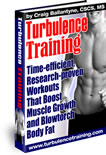Fat Loss Techniques with Tom Venuto
 There are a lot of questions about the relationship between cardio exercise and fat loss that we will discuss over the next few days with Tom Venuto, who is internationally recognized as a fat loss guru.
There are a lot of questions about the relationship between cardio exercise and fat loss that we will discuss over the next few days with Tom Venuto, who is internationally recognized as a fat loss guru.
For those of you who don’t know Tom Venuto, he is a NSCA-certified strength and conditioning specialist, lifetime natural bodybuilder, freelance writer, personal coach and author of the #1 best-selling e-book “Burn the Fat, Feed The Muscle” (BFFM): Fat Burning Secrets of the World’s Best Bodybuilders and Fitness Models.
Tom has written over 170 articles and has been featured in IRONMAN Magazine, Natural Bodybuilding, Muscular Development, Muscle-Zine, Olympian’s News (in Italian), Exercise for Men and Men’s Exercise. Tom’s articles on bodybuilding, weight loss and motivation are featured regularly on dozens of websites worldwide. If you would like more information on Tom’s “Burn The Fat” e-book, click here: www.burnthefat.com.
So let’s get right into it.
**********************
Craig Ballantyne: Tom, you’ve written a great article called, “Risk to benefit ratios of extreme and controversial fat loss techniques.” I first read it on your site, Fitness Renaissance (www.fitren.com) has rankings since you wrote that article?
Tom Venuto: That article pretty much sums up my current thoughts about fat loss. The article looked at techniques for fat loss that are controversial, like not eating for 2-3 hours before going to bed or not eating carbs after a certain time of the day, or doing early morning cardio on an empty stomach. Some experts recommend these methods; others strongly recommend avoiding them. Some say they work well; others say they don’t work at all.
The main message I wanted to get across is that when you generalize by saying things like, “This technique is good”, “that technique is bad”, or “never do this,” “always do that,” you’re limiting yourself. I believe in the philosophy that the person who has the most flexibility and the most choices is the person with the most power to get results and to break past barriers (which unfortunately, are often self-imposed by all or none thinking).
Instead of making generalizations, I prefer to approach training and nutrition from the viewpoint of personalization and risks versus benefits. If you think about it, all exercise has risks. Squatting has risks. Running has risks. Competing in sports has risks. You can’t avoid risks. Heck, being alive has risks! The idea is to manage risks, not to try and eliminate them.
Take fasted cardio in the morning, for example. Are there risks in using this technique in an attempt to accelerate the fat loss? Yes, absolutely. Cortisol is higher in the morning, so you are more catabolic, and you might lose muscle. Does that mean there are no benefits and you should never use this technique? Not necessarily. Does doing cardio on an empty stomach guarantee you’re going to lose muscle? No, it only increases the possibility. However, many trainers, strength coaches, athletes and bodybuilders approach techniques like these with “It’s good” or “It’s bad” with no shades of grey in between.
The truth is, the value of each technique depends very much on the context. I remember reading something Charles Poliquin wrote about how ridiculous it was to think about his “manly men” athletes (as he called them), such as a 6 foot 5 inch 250 pound hockey player, doing any kind of conventional “aerobics.” That makes complete sense to me – in that context. If the athlete shows up after the off season carrying some undesired body fat, that weight can easily be shed with strength training and nutrition. Combine that with energy expended from practice time, and no aerobics are necessary.
However, does that mean “All aerobics are bad” or “Cardio is completely worthless.” Well, again, it depends on the context. Bad or worthless when? How much? How intense? What kind? Under what circumstances? And for whom? Are we talking about a 55 year old sedentary women with 35% body fat, an elite shot putter or a bodybuilder six weeks out from a competition?
I think these rigid all or none beliefs get formed gradually over a whole lifetime of experiences. We tend to collect our own personal biases and carry them along with us – I know I had to overcome my “pure bodybuilder” mentality and develop more flexibility in my approaches in order to really serve my non-bodybuilder clients the best. I specialize in fat loss – including nutrition, exercise and the psychological/emotional aspects – and my personal interest is bodybuilding.
I don’t train people for sports, so I don’t have the perspective that most strength coaches do. Similarly, I imagine that many top strength coaches have developed an anti-cardio bias from their experience working with power, speed and strength athletes who have always been told that aerobics kills your strength, and perhaps they generalize their beliefs to apply to everyone.
The bottom line and the whole point of my article was that there are no absolutes, everything is context dependent.
Craig Ballantyne: You rank “fasted cardio in the morning” as a high risk, high benefit activity for fat loss. Is this something that you use yourself or with clients?
Tom Venuto: Because it’s high risk, it’s not necessarily a fat loss technique I recommend for everyone all the time. However, I’m not afraid to use it and I believe it has benefits that can outweigh the risks, depending on the circumstances. I usually do fasted cardio in the morning about 8-12 weeks before a competition. However, it depends on my weekly results. If I’m losing fat quickly and easily, I don’t need to use any high-risk techniques. Sometimes I’ll still do cardio in the morning, because I like doing it then, but I’ll have a whey protein drink or even a whole meal shortly beforehand.
I like to have an enormous amount of flexibility in my approach. If there’s a plateau in fat loss, I want to be able to dig into my bag of tricks and have a lot of stuff in there to pull out when I need it. If you only have one way, and you get stuck, you have a problem. I don’t like rigid formulas. I like freedom to choose my approach according to how things are going.
That’s all for today. We’ll take a look at the pro’s and con’s to traditional cardio compared to interval training in part 2 of this expert inter view series with Tom Venuto. 